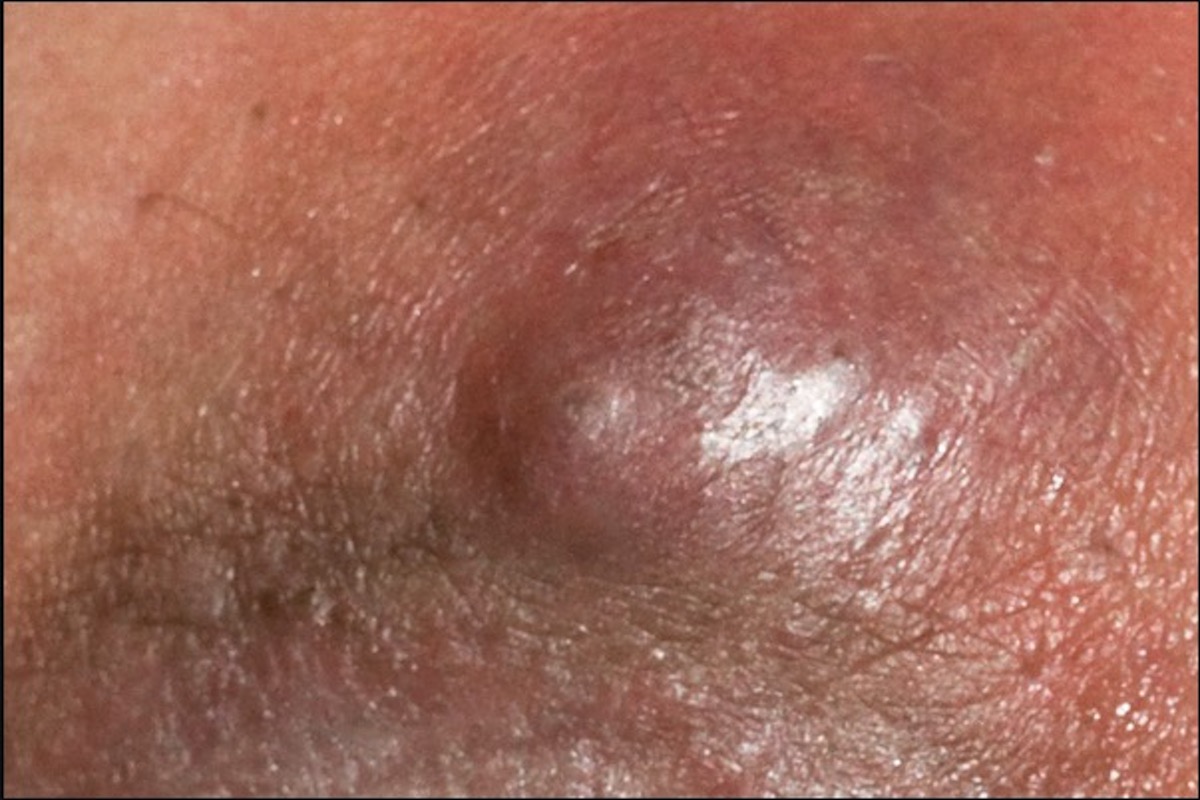Boils are a skin condition that affects many people in the United States. They are red, painful, pus-filled bumps that develop under the skin, caused by a bacterial infection in a hair follicle or oil gland. In this article, we’ll take a closer look at what this skin condition entails, what causes them, and how they can be treated.

What is Boils?
Boils, also known as furuncles, are a skin condition that can occur anywhere on the body. They usually appear as red, swollen, and tender lumps, which can grow larger over time and eventually rupture, releasing pus.
Causes & Types of Boils
The skin condition is caused by a bacterial infection in a hair follicle or oil gland. Staphylococcus aureus is the most common type of bacteria that causes it. There are different types of boils, including carbuncles, which are a cluster of boils that can cause additional symptoms such as fever and swollen lymph nodes.
Who Is At Risk?
Anyone can develop boils, but some people are more at risk than others. People with weakened immune systems, such as those with diabetes or HIV, are more likely to get boils. Those who have poor hygiene, are exposed to chemicals or irritants, or have skin conditions such as eczema or psoriasis are also at a higher risk of developing it.
Symptoms of Boils
The symptoms of boils include red, swollen, and painful bumps under the skin, with a white or yellow center filled with pus. In some cases, a cluster of boils may develop, which is known as a carbuncle. This can cause additional symptoms such as fatigue, fever, and swollen lymph nodes.
Overview of Different Types of Boils
This table gives you a simple and easy-to-understand summary of the important details about boils. It tells you how they look, what causes them, and how they can be treated. This helps you to quickly understand the information.
| Type of Boil | How Does It Look Like? | How Is It Caused | Is There a Treatment Option? |
|---|---|---|---|
| Furuncle | Red, swollen, painful bump under the skin with a white or yellow center filled with pus | Bacterial infection in a hair follicle or oil gland, usually caused by Staphylococcus aureus | Warm compresses, keeping the area clean and dry, antibiotics (in some cases), draining by a healthcare provider (in severe cases) |
| Carbuncle | Cluster of boils that can cause additional symptoms such as fever and swollen lymph nodes | Bacterial infection in multiple hair follicles or oil glands, usually caused by Staphylococcus aureus | Warm compresses, antibiotics, draining by a healthcare provider (in severe cases) |
| Cystic acne | Large, red, painful pimples that are filled with pus and can cause scarring | Blockage of oil and dead skin cells in hair follicles, usually caused by hormonal changes | Topical or oral medications such as retinoids, antibiotics, or birth control pills, drainage by a healthcare provider (in severe cases) |
| Hidradenitis suppurativa | Painful bumps or lumps that develop under the skin, often in areas with sweat glands such as the armpits, groin, or buttocks | Blockage of hair follicles and oil glands, often caused by hormonal changes or genetics | Antibiotics, anti-inflammatory medications, immunosuppressive medications, surgical removal of affected skin (in severe cases) |
How Is It Diagnosed?
A healthcare provider can usually diagnose a boil by examining the affected area. They may also take a sample of the pus for testing to determine the type of bacteria causing the infection.
Treatment Options for Boils
Most boils will heal on their own within a few weeks. However, there are several treatments that can help speed up the healing process and reduce symptoms. These include applying warm compresses to the affected area, keeping the area clean and dry, using over-the-counter pain relievers, and avoiding tight-fitting clothing that can irritate the skin. In some cases, antibiotics may be prescribed to treat the bacterial infection, and if the boil is very large or does not heal on its own, it may need to be drained by a healthcare provider.
If you suspect you have a boil, it’s important to seek medical attention if it doesn’t heal on its own or if you experience symptoms such as fever or chills. With proper treatment and prevention measures, you can reduce your risk of developing boils in the future. It’s estimated that millions of people in the United States are affected by boils each year. Still need information about this skin condition, or do your symptoms not match those listed above? Then search further here quickly:

